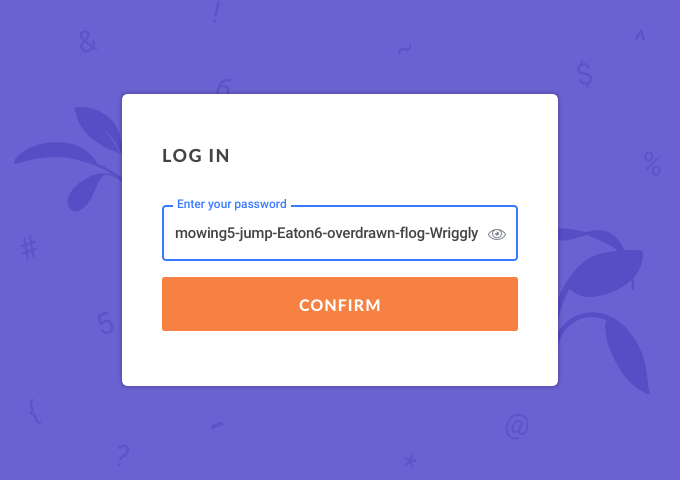

- Create a strong password how to#
- Create a strong password install#
- Create a strong password full#
- Create a strong password registration#
See this guide’s Passphrase section for advice on how to do that.
Create a strong master password to open the password database. Create a strong password install#
Install any extensions or plugins for the web browser(s) you use. You can find even more choices by using your favorite search engine. Dashlane (closed-source, free/commercial). Choose a password manager. Some popular ones are:. These are the general steps, but you may want to check your application’s documentation for more details. There are many different manager applications, so you’ll want to pick which one you’d like to use and then install it on your computer. This is the easiest and most secure method available today, and we strongly recommend using it. You never have to worry about choosing a good password, remembering it, or typing it again. If you only have to remember one password, you can make it random and hard to guess. You use a single passphrase to access the database, and then the manager will automatically enter your username and password into a website’s login form for you. Don’t forget to click Save Changes at the bottom of the page.Ī password manager is a software application on your computer or mobile device that generates strong passwords and stores them in a secure database. This will take you to the wp-admin General Settings page, where you can find the Membership setting. To deactivate this option, go to Settings → Generaland select the Classic view from the View tab in the upper right corner. If you are not using a membership plugin that requires this setting and do not have a custom setup relying on this option, we recommend deactivating the option. To verify if this setting is required by your plugin, please refer to the plugin’s documentation. You may need to use this setting when creating a custom membership site or when using membership plugins. Any users who register this way are granted the user role set as the “New User Default Role.” Depending on the default role granted, this setting can create a security risk varying from granting complete control over a site to allowing unwanted spam users. Create a strong password registration#
This enables anyone to create an account on your site via the default registration page. Plugin-enabled sites include a “Membership: Anyone can register” option under Settings → General (Classic View). Not only will they be able to take your site for a joyride, but having an extra set of keys around significantly increases the risk of your site being hijacked.

When you make another user an Administrator on your site, you create a separate set of keys and hand them to someone else. Reserve the Author and Editor roles for trusted users with a long-term commitment to your site.įinally, be particularly cautious with the Administrator role. If you’re setting up an account for a user who only plans to contribute a few posts, make them a Contributor. When adding users, try to find the role that best suits what you want them to do on your website.
Create a strong password full#
Administrators: have full control of the site – they can even delete it.Editors: can edit or publish any user’s posts, moderate comments, and manage categories and tags.Author: can publish posts and upload images but can’t touch other users’ posts.Contributor: the most limited role can only write draft posts but can’t publish them.That’s why on, you can set different roles for each user you add to your site. However, sharing the load also means sharing the responsibilities. While each site has only one owner, you can have as many users as you want – this is ideal for group blogs with multiple authors, magazine-style sites with an editorial workflow, or any other large site where you want to share some of the administrative load.






 0 kommentar(er)
0 kommentar(er)
